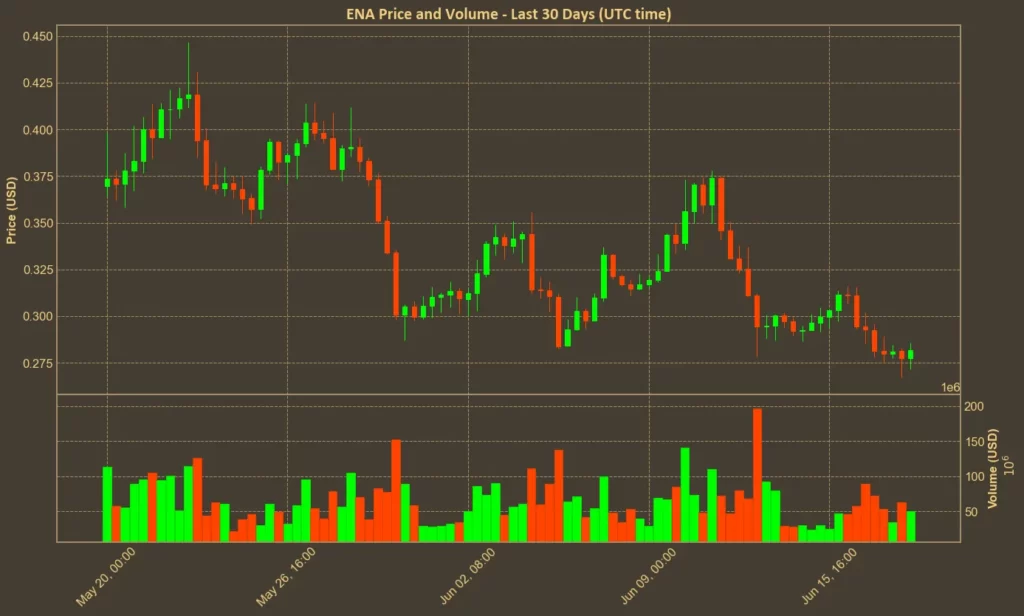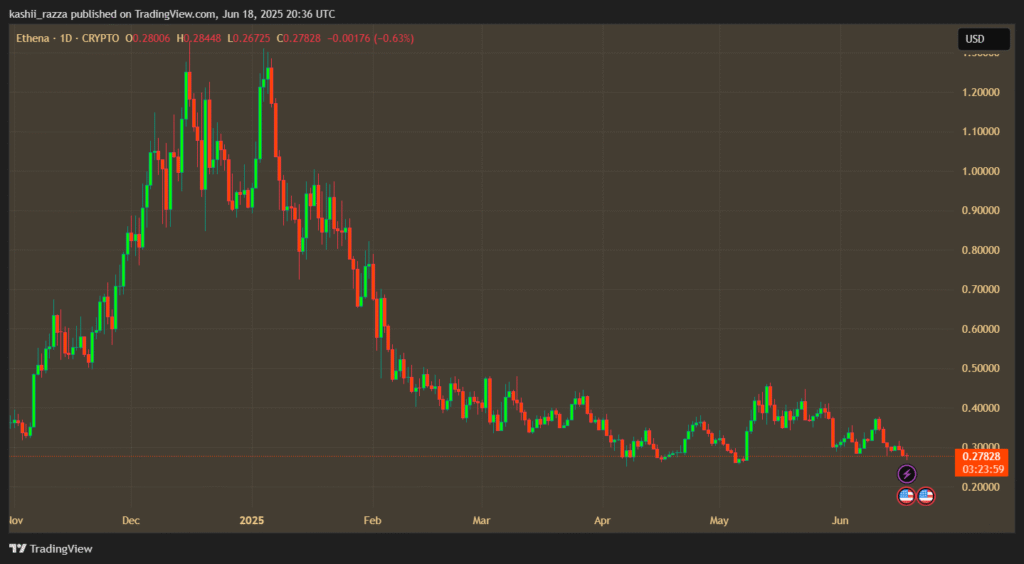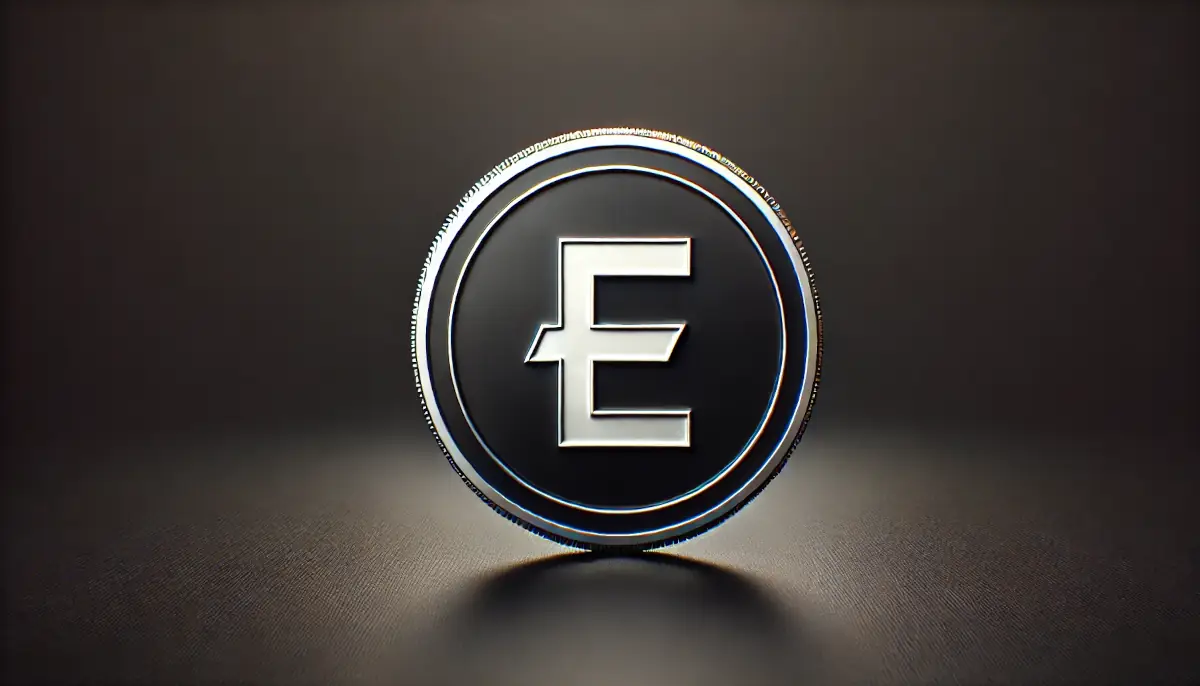Ethena’s ENA token is on a downward spiral, now trading over 77% below its January highs of $1.25. Once seen as a promising player in the DeFi space with its stablecoin USDe and high yields, the token has faced sustained price pressure. A mix of regulatory scrutiny, heavy unlock schedules, and a collapse in the underlying economic model have all contributed to this slump.

Table of Contents
Ethena Road to 77% Fall
Ethena started the year with strong momentum. The token climbed to $1.25 on January 6, backed by the broader market rally after Bitcoin reached a record high above $109,000. That optimism faded within weeks though.
By the end of January, ENA dropped to $0.65 after derivatives funding rates turned negative. This shift hit the core mechanism behind Ethena’s synthetic dollar, USDe, which relies on positive funding to generate yield.
By March, the situation worsened. On 3 March, the project unlocked 2.07 billion ENA – more than two-thirds of the existing circulating supply. That move overwhelmed daily trading volumes and drove the price below $0.50 within days. Throughout April and May, ENA struggled to hold above $0.40. With no meaningful change in funding rates, the token hovered near technical support levels before breaking lower.
June brought more damage. On 5 June, a wallet linked to the project moved 17 million ENA to exchanges, triggering a sharp selloff. Just over a week later, short interest spiked across derivatives platforms. That led to another steep drop, with ENA falling into the $0.27–$0.30 range, close to its all-time low.

Today, ENA trades at $0.28, 77% below its January peak. While the protocol’s total value locked remains high, that has done little to stop the token from shedding value.
Regulatory Warning Signs Add to Pressure
In early 2025, both U.S. and Australian regulators started raising concerns about high-yield stablecoins. These were seen as resembling securities due to their interest-bearing nature. In May, panic within U.S. banking circles over products like USDe, which promise returns far higher than traditional instruments.
The memory of the 2022 Terra-Luna collapse still weighs on the sector. Multiple bills in Congress aim to tighten stablecoin regulations, especially regarding reserve transparency and income generation methods.
This regulatory shadow makes institutional participation less likely. NFTevening highlighted that USDe received a “weak” peg-stability rating from S&P Global. That, along with falling yields, shrinks the user base and puts more pressure on ENA’s price.
Long-Term Recovery Still Skeptical
The current ENA price shows nearly a three-quarter loss since the year began. Optimists believe that most weak hands have exited and that new product launches, like interest-bearing vaults, could help the platform regain stability. Recent reports describe slight improvements in funding rates, which might support a short-term bounce.
Skeptics, however, point to the next unlock cycle. More than 4.5 billion tokens will hit the market between now and April 2026. With funding rates still vulnerable to macro events and regulatory headlines, any gains could be short-lived.
Long-term recovery would require three things to happen at once: consistent net inflows into USDe, stable funding above 4%, and a slower pace of unlocks. Without that, ENA risks further downside, especially if another round of negative funding returns as it did in January.




